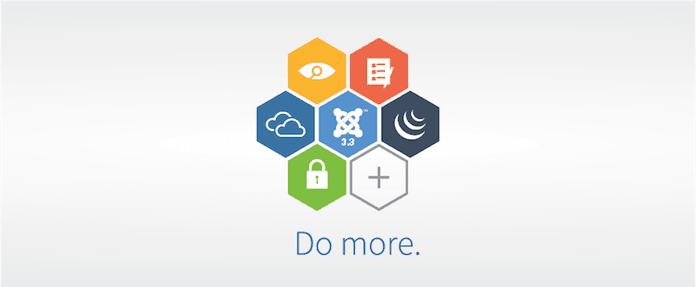
Joomla stands as one of the most powerful content management systems (CMS) in the digital landscape, empowering millions of websites worldwide. This comprehensive guide will navigate you through the essentials of getting started with this robust platform.
Understanding Joomla
Joomla represents a sophisticated yet user-friendly open-source content management system that has revolutionized website development since its inception in 2005. This versatile platform powers everything from personal blogs to enterprise-level corporate websites.
What Makes Joomla Unique?
Joomla distinguishes itself through its architectural flexibility and extensive feature set. Unlike simpler CMS platforms, Joomla strikes an optimal balance between user-friendliness and advanced functionality, making it suitable for both beginners and experienced developers.
| Feature Category | Description | Benefit |
|---|---|---|
| Core Architecture | MVC (Model-View-Controller) | Enhanced development flexibility |
| Database Support | Multiple database types | Greater hosting compatibility |
| Template System | Responsive and customizable | Mobile-friendly designs |
| Access Control | Granular permission levels | Advanced user management |
Key Features and Capabilities
- Advanced Content Management
- Multi-level content organization
- Built-in version control system
- Flexible content scheduling
- Custom field types support
- Security Framework
- Two-factor authentication
- SSL encryption support
- Regular security updates
- IP blocking capabilities
Setting Up Your Joomla Environment
Technical Requirements
Before installation, ensure your hosting environment meets these minimum requirements:
| Component | Minimum Requirement |
|---|---|
| PHP Version | 7.4 or higher |
| MySQL Version | 5.6 or higher |
| Server Space | 525 MB minimum |
| Memory Limit | 64 MB or higher |
Installation Process
- Database Configuration
- Create a new MySQL database
- Set up database user credentials
- Note down connection details
- File Upload
- Download Joomla package from official website
- Extract files to your hosting directory
- Verify file permissions (755 for folders, 644 for files)
- Web-based Setup
- Access your domain through a browser
- Complete the installation wizard
- Configure site settings
Managing Your Joomla Website
Administrator Interface Overview
The Joomla backend, accessible via /administrator, provides a comprehensive dashboard for managing your website. Key sections include:
- Control Panel: Central hub for quick access
- System: Configuration and maintenance tools
- Users: User and permission management
- Menus: Navigation structure control
- Content: Article and media management
Content Creation and Organization
Article Management
Creating compelling content in Joomla involves understanding its hierarchical structure:
- Categories
- Create logical content groups
- Establish content hierarchy
- Enable filtered navigation
- Articles
- Write and format content
- Assign categories and tags
- Set publication parameters
| Content Element | Purpose | Best Practice |
|---|---|---|
| Categories | Content organization | Use meaningful names |
| Tags | Cross-referencing | Apply consistently |
| Featured Articles | Homepage highlights | Update regularly |
Template and Design Management
Customizing Your Site’s Appearance
Joomla’s template system allows for extensive customization:
- Template Styles
- Color schemes
- Layout options
- Typography settings
- Module positions
- Module Management
- Position assignment
- Display conditions
- Content association
Extension Management
Types of Extensions
Joomla’s functionality can be extended through various types of add-ons:
| Extension Type | Purpose | Examples |
|---|---|---|
| Components | Major functionality | Forums, shops |
| Modules | Display elements | Social feeds |
| Plugins | Event handlers | Authentication |
| Templates | Site design | Theme packages |
Advanced Features and Optimization

SEO Capabilities
Joomla includes built-in SEO features to improve your site’s visibility:
- URL Configuration
- SEF (Search Engine Friendly) URLs
- Custom URL structures
- Redirect management
- Metadata Management
- Page titles
- Meta descriptions
- Keywords
- Robots directives
Performance Optimization
Implementing these optimization techniques ensures optimal site performance:
- Caching
- Page caching
- Browser caching
- Progressive caching
- Image Optimization
- Proper sizing
- Format selection
- Compression settings
| Optimization Area | Impact | Implementation |
|---|---|---|
| Cache Settings | High | Enable system cache |
| Image Compression | Medium | Use optimization tools |
| Database Cleanup | Medium | Regular maintenance |
Security Best Practices
Maintaining a secure Joomla installation requires attention to several key areas:
- Regular Updates
- Core system updates
- Extension updates
- Security patches
- Access Control
- User permissions
- Administrator accounts
- Session management
- Backup Procedures
- Database backups
- File system backups
- Recovery testing
According to BBC Technology, implementing proper security measures is crucial for any CMS platform, with regular updates being the primary defense against vulnerabilities.
Troubleshooting and Maintenance
Common Issues and Solutions
Understanding common problems helps maintain a healthy Joomla installation:
| Issue | Common Cause | Solution |
|---|---|---|
| White Screen | PHP memory limit | Increase memory allocation |
| 404 Errors | URL configuration | Check SEF settings |
| Slow Loading | Cache settings | Optimize cache configuration |
Regular Maintenance Tasks
Implement these maintenance procedures for optimal performance:
- Weekly Tasks
- Check for updates
- Review error logs
- Backup verification
- Monthly Tasks
- Database optimization
- Extension audit
- Performance review
- Quarterly Tasks
- Security audit
- User access review
- Content archive
This comprehensive guide provides the foundation needed to start your journey with Joomla. Remember that mastering any CMS requires practice and patience. As you become more familiar with Joomla’s features and capabilities, you’ll discover its true potential in creating and managing dynamic websites.
